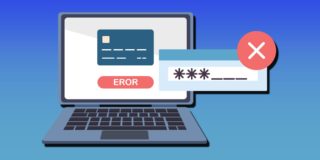How To Avoid Bit Rot
Bit rot is a real thing that happens to files over time where they do, quite literally, start to wear out. Chances are you have experienced files or storage media that’s been ‘rotted’ before. Here are some common examples for home computer users:
- You use an email client, and some older emails have attachments that simply cannot be viewed and crashes the client every time you try to access them.
- A CD or DVD you burned 5 years ago is no longer usable due to natural decay – which is not seen by the human eye ordinarily, but it does happen.
- An older photo image you try to load only shows a ‘piece’ of it, while the rest is garbled colors. That image file is bit-rotted.
Avoiding bit rot is relatively simple:
Hardware
Avoid using optical discs in old optical drives
If you have a DVD of data you deem important, you should only use it in newer optical drives. Older ones may unintentionally damage the disc. Note that this applies to data and not video. Where traditional DVD movies are concerned, age of the console player or computer optical drive isn’t an issue unless it actually makes whining noises – and you obviously wouldn’t pop a disc in one of those.
Always disconnect Flash-based media properly
We all know the ‘safe disconnect’ in Windows, Mac and Linux whenever removing a USB stick. Practice this routinely. Yes, it’s annoying, but necessary to avoid corrupted and/or bit-rotted data.
If it’s really important, store it on a locally-accessible medium
Files transferred over the network run the risk of decay every time it’s transferred. If the data is something that’s important to you, place it on local media instead for backup.
Software
Avoid leaving files open for extended periods of time
A simple example of this is working with documents. When the document is open, the word processor will periodically auto-save the file. If you walk away from the computer and leave the document open, that causes unnecessary file writes over and over again. When you have to leave the computer, save the document and reopen it later.
Periodically save files as new if the old was written to many times
Old files are notorious for exhibiting bit rot, so if you can, open the file then save as new. The data is written to a new file which has no bit rot to it.
Use file archives as a ‘shield’
On its own, a file once damaged from bit rot and/or corruption usually cannot be recovered, but an archive can. Whether it’s ZIP, 7z, RAR or whatever archive format you use, they can all be tested regularly for errors and if any are found can be fixed with just a few clicks of the mouse.
Does this mean you should put all your files into archives? No, because that would be impractical. You should put your old files into archives, as in ones you need but do not access very often. Photo images are a good example of this. Left alone, they can exhibit bit rot over time, and when you discover this it’s too late to do anything about it. In an archive however, if the archive file is damaged due to age, it can be repaired without the need for any special utilities. Usually, all it takes to test an archive is a right-click/Test Archive.
On an end note concerning file archives, using solid compression is a bad idea because if the archive is damaged, the solid compression block is usually wrecked beyond repair. For multiple files in a single archive, non-solid is the best way to go. If you ask "How do I know which I’m using?", the fact you’re asking the question means you’re not using solid compression, because you specifically have to check a box to enable it in your file archiver of choice.

















4 thoughts on “How To Avoid Bit Rot”
I’d hate to see the faces of the general public when told, “No, data on disk is NOT exempt from corrosion.”
I’d be interested in seeing a summary comparison of expected data lifetimes between newer and older tech though.